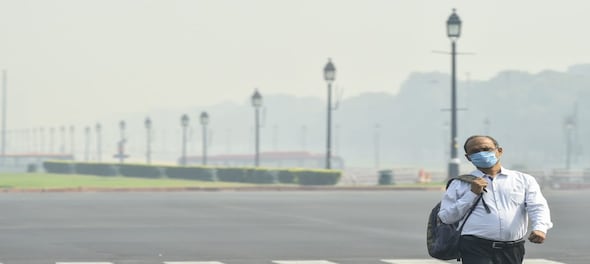
The air quality in Delhi and the national capital region remained in the ‘very poor’ category as the Air Quality Index (AQI) score around the city remained in the 300-400 range. Overall the AQI in the city stood at 348 on Tuesday morning. With changes in weather and a gradual decrease in pollution, Environment Minister Gopal Rai stated that primary schools will reopen on November 9 and government employees will have to come to the office in full strength again.
“There has been an improvement in air quality in the past two days. Yesterday and today, the AQI has fallen to around 350. In stubble burning counts as well, there’s a reduction and wind direction has changed,” Rai said on Sunday.
The Commission for Air Quality Management in National Capital Region and Adjoining Areas (CAQM), however, has rescinded the restrictions that were enforced under stage 4 of the Graded Response Action Plan GRAP, following an improvement in air quality from ‘severe’ to ‘very poor’. The use of BS-III petrol and BS-IV diesel four-wheelers in the region will remain banned under stage 3 of the GRAP.
In response to the continuing “very poor” air quality, the Commission for Air Quality Management (CAQM) has asked all construction and demolition sites across the city to use anti-smog guns in direct proportion to the total area of the project.
Meanwhile, stubble-burning incidents crossed the 30,000 mark in Punjab and the state reported 2,487 stubble-burning cases on Monday itself. Ludhiana-based Punjab Remote Sensing Centre data counted a total of 32,486 cases of stubble burning between September 15 and November 7, a decline over 2021’s 37,933 and 2010’s 57,696 farm fires in the same time period.
Areas like Ferozepur, Moga, Muktsar, Batala, Faridkot, Barnala, Sangrur, Fazilka and Mansa are some of the hotspots of stubble burning. Stubble burning has been blamed as one of the contributing factors to the worsening air quality over the national capital as farmers burn paddy straw to quickly prepare the land for the Rabi wheat crop.
According to a LocalCircles survey of 20,000 inhabitants of the Delhi-NCR, 53 percent blame stubble burning for air pollution. But other sources like vehicular pollution, household pollution, and pollution from the 11 thermal coal-using power plants around Delhi also contribute to the poor air quality.
An assessment from the Centre for Science and Environment (CSE) found that pollution from vehicles contributed to half of the local sources for PM2.5 pollution in Delhi.
The geography and weather also play a large role in a layer of smog settling over the Northern Gangetic Plains, which Delhi sits squarely in the middle of. The flat area allows wind to flow from the Tibetan plateau and essentially traps the heady mix of pollutants and smoke over the plains. The combination of geography, climatic conditions, continuing pollution and stubble burning make Delhi, along with other cities in the capital region and north India turn into some of the most polluted in the world.
ALSO READ | Delhi CM Arvind Kejriwal has a 15-point winter action plan to fight pollution — details here



